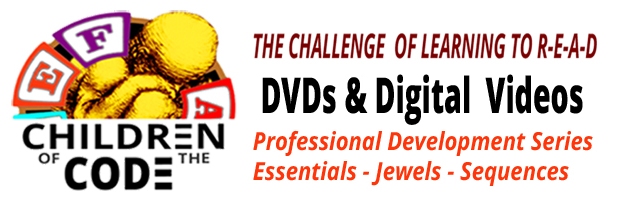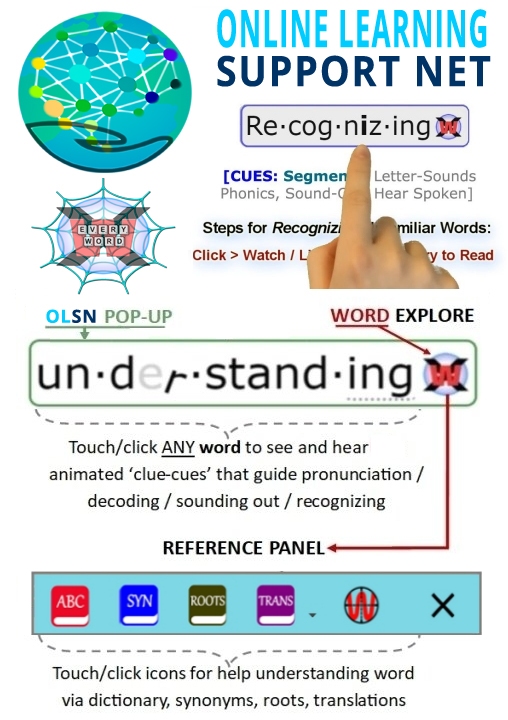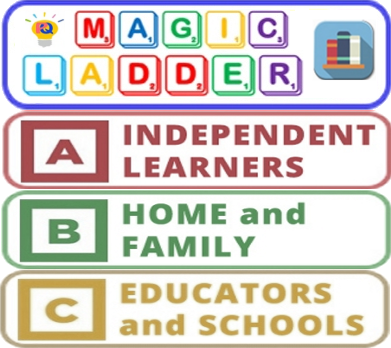Phonemic Awareness
..What does it take to be able to learn to read? We know that it initially takes a clear understanding that the language we hear is composed of smaller sounds. These are called phonemes, the smallest units of sound.Dr. G. Reid Lyon, Past- Chief of the Child Development and Behavior Branch of the National Institute of Child Health & Human Development, National Institutes of Health, Current senior vice president for research and evaluation with Best Associates. Source: COTC Interview – http://www.childrenofthecode.org/interviews/lyon.htm#Whatweknow
Note: Remember to click on any word on this page to experience the next evolutionary step in technology supported reading.
Phonological Awareness
In the research on beginning reading, we generally target five different pieces: phonological awareness, vocabulary, phonics, fluency and comprehension. Phonological awareness basically deals with the sound system independent of any text. The idea is that the sound system is predictive of how we read in text. So, I mean, that’s a peculiar thing in itself.
Edward Kame’enui, Past-Commissioner for Special Education Research where he lead the National Center for Special Education Research
under the Institute of Education Sciences. COTC Interview – http://www.childrenofthecode.org/interviews/kameenui.htm#DIBELS
Key to Learning to Read
The real key to learning to read is becoming what is known in the field as phonologically aware. Phonological awareness means knowledge – the awareness that words can actually be broken down into smaller parts and those parts are called phonemes or speech sounds. And the phonemes build words both for oral language and for written language.
And it turns out that children who have difficulty with written language as a group, not all of them but the large majority of them, have difficulty in becoming phonologically aware and playing little word games. Being able to know that the word plate without the /p/ is late. Now, people who have coded the whole word who can say the word plate perfectly well – unless they’re phonologically aware that they can get inside the word, they have very great difficulty in knowing that plate without the /p/ would make the word late. Or plate without the /t/ would make the word plae.
Paula Tallal,Board of Governor’s Chair of Neuroscience and Co-Director of the Center for Molecular and Behavioral Neuroscience at Rutgers University. Source: COTC Interview – http://www.childrenofthecode.org/interviews/tallal.htm#Phonologicalawareness
What We Know
Dr. Reid Lyon: Well, when we say question number one, what does it take to be able to learn to read? We know that it initially takes a clear understanding that the language we hear is composed of smaller sounds. These are called phonemes, the smallest units of sound. And people say sure, you know, cat has three sounds /c/ /a/ /t/. And I can ask people all the time how many sounds they hear in big or cat and they say three. But they don’t. You don’t hear three sounds in cat, I don’t hear three sounds in cat, and our kids never get any practice with the sounds in cat because nature has given us an oral language that allows us to communicate rapidly so that when I say cat I don’t say /c/ /a/ /t/. What the hell is a /c/ /a/ /t/? What I say is cat and the minute I start to say cat that /a/ and the /t/ sound co-articulate or bundle together and come by the ear as one pulse of sound. Phoneme awareness is much more difficult because you don’t hear the sounds. The brain has to pull from that one burble or acoustic bundle the three sounds because the ear won’t. The ear never hears the individual sounds unless we spell them out.
G. Reid Lyon, Past- Chief of the Child Development and Behavior Branch of the National Institute of Child Health & Human Development, National Institutes of Health, Current senior vice president for research and evaluation with Best Associates.Source: COTC Interview – http://www.childrenofthecode.org/interviews/lyon.htm#Whatweknow
Phonemes
Phonics without the letters is the most frequent description I hear from teachers, which is not right at all. At the basic level, a better summary of phonemic awareness is can you pay attention to the sounds of words as distinct from their meanings? Given that, the next level is whether you understand that every spoken word can be conceived as a sequence of these little elements or speech gestures called phonemes, and that the letters represent those left to right?
Marilyn Jager Adams, Chief Scientist of Soliloquy Learning, Inc., Author of Beginning to Read: Thinking and Learning About Print. Source: COTC Interview –http://www.childrenofthecode.org/interviews/adams.htm#Phonemes
Phonemic Awareness
David Boulton: Is phonemic awareness something that is required in our daily oral interchange or is it unique to writing?
Dr. Anne Cunningham: Well that’s a great question because phonemic awareness is something that young children, prior to having to learn in an alphabetic script such as ours, they don’t focus on the structure of language. They don’t play with it to the degree that they need to to learn in an alphabetic language. We’re more focused on meaning, as we should be, but in order to become a successful reader at some point we have to shift our attention away from the meaning to the structure and be able to perceive these sounds that are contained within words, and be able to rhyme and segment /c/ from at to make cat. And that’s the precursor to being able to break the code. And without that facility and awareness children just suffer too long in learning to read.
Anne Cunningham, Director of the Joint Doctoral Program in Special Education with the Graduate School of Education at the University of California-Berkeley Source: COTC Interview: http://www.childrenofthecode.org/interviews/cunningham.htm#PhonemicAwarness
Phonemic Awareness is Artificial
David Boulton: So, in that sense, the whole phonemic awareness piece of this is an artifact of learning to read, not something we would naturally have to develop to process the distinctions in oral language.
Dr. Reid Lyon: You do not need phonemic awareness to listen and speak and hang out and talk. Why? Because I’m not spelling the words out to you, I don’t say /c/ /a/ /t/.
David Boulton: Yet much of our research seems to suggest that the lack of this is some deficit in children.
Dr. Reid Lyon: Well, it’s not a deficit in children. It’s only a deficit if they don’t get it to learn how to read. A deficit is only a deficit if it impacts negatively on something critical that has to be developed.
David Boulton: It’s a deficit with respect to the conditioning necessary to take in this artificial process.
Dr. Reid Lyon: Yeah, it is an artificial process, and it’s a random process.
G. Reid Lyon, Past- Chief of the Child Development and Behavior Branch of the National Institute of Child Health & Human Development, National Institutes of Health, Current senior vice president for research and evaluation with Best Associates. Source: COTC Interview – http://www.childrenofthecode.org/interviews/lyon.htm#PhonemicAwareness
Phonemic Awareness is Often Misunderstood
However, the concern that I have is that many people who are using the term do not really understand the factor itself, and how much you have to do to bring that in. Just for example, kindergarten teachers now are told to start the development of phoneme awareness by working on rhyming with children. And rhyming requires some awareness of phonemes.
Pat Lindamood, Founder, Lindamood-Bell Learning Processes. Source: COTC Interview – http://www.childrenofthecode.org/interviews/lindamoodbell.htm#PhonemicAwareness
History of Phonemic Awareness Revolution
Dr. Marilyn Jager Adams: So, it was Al Liberman and his group who gave us the enormously important insight that phonemes are not audible signals. Using their equipment they showed how phonemes are blended together and co-articulated in spoken language. Alongside, there was this burst of activity in the early 1960’s that showed, for example, if other stimuli came at you with the speed of individual phonemes that they would exceed the resolving power of the ear and come out as one big buzz – the idea that phonemes could not be heard, that they were not perceptually…
David Boulton: Distinct?
Dr. Marilyn Jager Adams: Entities, right. Basically, the individual phonemes – those little sounds that go with the letters of the alphabet – are not real. Or not in an acoustic sense, that is.
Marilyn Jager Adams, Chief Scientist of Soliloquy Learning, Inc., Author of Beginning to Read: Thinking and Learning About Print. Source: COTC Interview – http://www.childrenofthecode.org/interviews/adams.htm
Phonological Awareness
Well, if Smith is wrong, if context isn’t driving this whole thing, what is?” People were starting to question that in the late 1970’s and starting to ask the Well, what is? question. Then the field was more ripe than it was back in 1963 for the phonological awareness work.
Keith Stanovich, Canada’s Research Chair of Applied Cognitive Science at the Department of Human Development and Applied Psychology, University of Toronto. Source: COTC Interview – http://www.childrenofthecode.org/interviews/stanovich.htm#PhonologicalAwareness:













